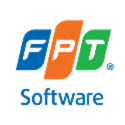Reduce the Pain of Modernizing Mainframes in 4 StepsReduce the Pain of Modernizing Mainframes in 4 Steps
Many leaders are reluctant to move off mainframe technology due to cost and risks. Here are four ways to understand your opportunities for lowering your modernization risks.
September 22, 2022

(SPONSORED ARTICLE)
We’re in the fast-paced age of digital transformation and yet, many companies rely on a technology that is 90 years old: mainframes. In fact, mainframes are still used by 71% of Fortune 500 companies and process 68% of the world’s production IT loads. Mainframe usage is especially prevalent in banking and insurance, government, healthcare, and retail.
There are many reasons mainframes still dominate the industry: They work well; they are intertwined with business processes; and they have historically been challenging to evolve. Many IT leaders view modernizing mainframes as a black box of risk, cost, and years of investment, at a time when they can ill afford any of the above. So, it’s not surprising that many IT leaders have been reluctant to move off this proven technology.
FPT Software, a Vietnamese IT services powerhouse, is helping companies and leaders navigate mainframe modernization, decision-making, and planning to re-structure your initiatives for success. We also provide customer-centric, end-to-end, digital transformation solutions and comprehensive technology services including consultation, discovery, implementation, operations, and maintenance to a wide range of industry-leading companies across the globe.
Traditional Mainframes Don’t Provide the Agility Companies Need
There are several trends causing leaders to rethink this approach. Mainframes are often highly customized to run hardcoded business processes at a time when companies are moving to the cloud for greater agility. It’s an era where microservices, no-code platforms, cloud workloads, and APIs reign.
So, it’s not surprising that technology companies such as Fujitsu have announced plans to discontinue mainframe sales and support. And many companies are scrambling to find COBOL programmers to support the estimated 220 billion lines of code that are still being used today, as existing talent continues retiring in droves.
Should You Replatform or Refactor? It Depends.
The good news is that partner business models, technology, and services have evolved to the point where modernizing your mainframe is no longer a frightening event. Gartner identifies seven different ways to proceed. Most however, will likely choose to replatform or refactor.
Replatforming is the easiest way to gain new capabilities. Your mainframe and its data are migrated to a modern cloud environment, while your user experience and business processes remain the same. This approach requires minimal code changes and is best when cost, speed of deployment, and a desire to minimize business disruption are the highest priorities. You’ll future-proof your business, technology, and talent pool by gaining cloud-native capabilities and trading COBOL for Java and C# programming languages. In addition, many companies reduce mainframe operational costs by 70% or more with cloud services. However, if your business processes are tangled and slow, replatforming will retrench the status quo.
Refactoring involves a heavier lift. You’ll need to invest more time, cost, and resources to refactor legacy code into languages such as Java or C# to gain the most from new cloud capabilities and features. The typical drivers for refactoring include leaders’ desire to simplify business processes; rationalize functionality; improve the user experience, performance, and security; and reduce operational costs. Companies also reduce technical debt by streamlining their code base, while creating a solid platform for innovation and business transformation.
So, should you replatform or refactor? The answer will depend on your business drivers. For many companies, the answer is both.
Four Steps to Approach Mainframe Modernization
As a subject matter expert in digital transformation solutions and comprehensive technology services, FPT collaborates with companies to help them make the decision best for their business. Below are four steps we advise customers to explore when starting mainframe modernization efforts:
Evaluate your company’s code base and data: Analysis tools can help you understand what percentage of your code base and data can be moved to the cloud without manual effort and would be a great candidate for refactoring. Be sure to also identify code that is complex and would likely be better maintained via replatforming.
Align potential opportunities with goals: Look for partners that have replatformed and refactored mainframes for companies across a wide array of industries. Hearing their case studies enables you to understand your peers’ goals, how they structured initiatives, and the benefits that similar companies achieved. You can use this information to set your own priorities with modernizing mainframes.
Tap a tech-savvy workforce: Outside consultants and service providers can tap into employees around the world to provide corporate customers with cost-effective technology services. Make sure to look for companies who use defined processes and best practices to migrate legacy COBOL code to new open platforms, maintain COBOL when it’s not practical to rewrite it, and develop new cloud applications.
Develop proof of concepts: Explore ways to start with a cost-effective pilot project that provides rapid value. From there, you can develop a roadmap that meets your business, technology, operational, and budgetary goals.
Conclusion
Mainframes play a vital role in industry. Yet, the reality is that they were built for another era. Companies need greater speed, flexibility, and innovation capabilities that traditional mainframes are not equipped to provide.
FPT Software can help you understand your opportunities with mainframe modernization; structure initiatives to meet your goals; engage a talented, cost-effective workforce to replatform and refactor your code; create clarity to mitigate risk; and provide value from the earliest days of collaboration.

Len Bertelli is a seasoned thought leader skilled at advising organizations on ways to leverage new technologies to build and maintain a reliable foundation and critical applications that meet changing demands and strategic business goals. As a senior vice president at FPT Software, he works closely with leading organizations in North America on advising digital transformation strategies and enterprise architecture for business-critical technology initiatives. Prior to joining FPT, Len served in CIO, CTO, and VP of Development roles for various manufacturing and waste management organizations including Waste Management, Casella Waste, Pantechnick International, and Pitney Bowes.
You May Also Like





